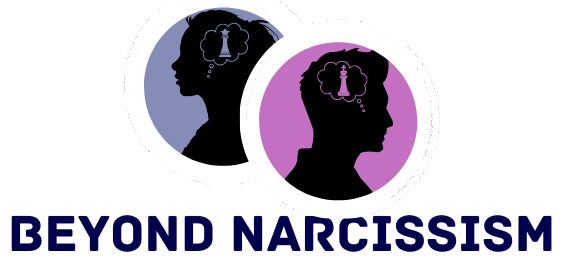Surviving a relationship with a narcissist can often feel like emerging from a storm, leaving you both relieved and bewildered. The healing process afterward is a journey that requires patience, understanding, and self-compassion, as you navigate the complex emotions that come with reclaiming your sense of self.
Recognizing the importance of healing is the first step toward rebuilding your life with resilience and hope. The scars left by a narcissistic relationship can be deep, but they also serve as reminders of your strength and capacity to overcome adversity.
In this article, we will explore strategies to help you mend emotional wounds and foster a renewed sense of self-worth. You’ll learn how to set healthy boundaries, rebuild your confidence, and cultivate supportive relationships that nourish your emotional well-being.
Our aim is to guide you through this transformative process with practical advice and empathy, ensuring you feel supported every step of the way. As you read on, know that you’re not alone on this path, and healing is not only possible but well within your reach.
1. Recognizing Narcissistic Abuse Patterns

Recognizing the patterns of narcissistic abuse is the first step toward healing. Often, these patterns can be so subtle that you might not even realize you’re in a toxic environment until you’re deeply entangled.
In a real-world scenario, a partner may frequently use gaslighting, making you question your reality and feelings. This tactic leaves you doubting your own perceptions and often leads to a cycle of self-blame and confusion.
Another common pattern is the idealize-devalue-discard cycle, where the narcissist initially showers you with love before gradually withdrawing it, leaving you feeling unworthy. Understanding and identifying these behaviors can empower you to break free from the emotional grip they hold.
Experts emphasize the importance of recognizing these patterns early to prevent prolonged emotional damage. Once aware, you can start setting boundaries and reclaiming your emotional well-being.
The takeaway here is that knowledge is power. By becoming aware of these manipulative tactics, you lay the groundwork for a healthier, more empowered future.
2. Emotional Impact of Leaving

Leaving a relationship with a narcissist can have a profound emotional impact on one’s wellbeing. Often, individuals experience a mix of relief and confusion, having been subjected to manipulation and gaslighting for an extended period.
In the aftermath, it’s common to feel a sense of loss and self-doubt, questioning one’s own judgment. This emotional turmoil is a natural response to the psychological abuse endured and can be overwhelming.
Consider Sarah, who left a five-year relationship with a narcissist and found herself struggling with guilt and fear. Like many others, she wondered if she had made the right decision, despite knowing deep down that her well-being was prioritized.
Therapists often suggest engaging in activities that reinforce one’s sense of self-worth. Journaling, for instance, can help articulate feelings and provide a safe space to process the emotions involved in the healing journey.
It’s crucial to allow yourself the time and space needed to heal without pressure. By doing so, one can gradually rebuild their self-esteem and move forward with clarity and strength.
Ultimately, the emotional recovery process is a personal journey, and it’s important to remember that healing is possible with patience and self-compassion. Acknowledging and addressing the emotional impact can pave the way for a more resilient and self-aware future.
3. Steps to Regain Self-Worth

As you embark on the journey to regain your self-worth after leaving a narcissist, it’s crucial to acknowledge that this process takes time and patience. Many individuals find themselves questioning their value, often due to the subtle manipulation experienced in the relationship.
Consider the case of Emily, who rediscovered her sense of self by engaging in activities that made her feel competent and fulfilled, such as painting and yoga. By focusing on her personal interests, she gradually rebuilt her confidence, proving that reconnecting with your passions can be a powerful tool in reclaiming your identity.
Therapists often suggest creating a list of your strengths and accomplishments to serve as a daily reminder of your capabilities. This exercise helps reinforce your intrinsic value and counteracts the negative beliefs instilled by the narcissistic partner.
Gradually, practice setting boundaries in various aspects of your life, which can be empowering and affirm your right to prioritize your well-being. Establishing these boundaries not only protects you but also reinforces your newfound self-respect.
Ultimately, healing involves embracing self-compassion and understanding that setbacks are a natural part of the process. By consistently nurturing your self-worth, you create a resilient foundation for future healthy relationships and personal growth.
4. Rebuilding Trust in Relationships

Rebuilding trust in relationships after leaving a narcissist can feel like an uphill battle. It’s crucial to remember that trust is a gradual process, and each step forward is a victory in itself. Understanding that not everyone will treat you the same way your past partner did is liberating. This realization allows you to open your heart to new possibilities while maintaining healthy boundaries.
Another essential step is to take things slowly and allow yourself to heal at your own pace. Rushing into new relationships might seem tempting, but taking time to rebuild trust with yourself first can lead to deeper connections later. Consider the story of Mia, who took a year to focus on herself before dating again. Her patience paid off, as she found a partner who respected her journey and boundaries.
Engaging in open and honest communication with potential partners can also help rebuild trust. Sharing your past experiences when you’re comfortable can foster understanding and empathy, paving the way for a healthier relationship. Seek to create a safe space where both you and your partner feel valued and heard, as this mutual respect forms the foundation of lasting trust.
Lastly, consider seeking professional support, such as therapy, to guide you through this process. A therapist can provide tools to manage trust issues and anxiety, offering a safe environment to explore your feelings. Remember, rebuilding trust takes time and patience, but with each step, you’re paving the way for healthier, more fulfilling relationships.
5. Embracing a Healthier Future

As you step into a new chapter, it’s crucial to envision a future filled with healthier relationships. Imagine meeting someone who genuinely respects your boundaries and treasures your individuality.
In the healing journey, it’s essential to identify what you truly desire in future relationships. Reflect on past experiences and use them as a guide to prioritize qualities such as empathy, honesty, and mutual support.
Take time to nurture your interests and passions, as they are key elements in creating a fulfilling life beyond past trauma. Engaging in activities that bring you joy can attract like-minded individuals who share similar values.
Experts emphasize the importance of self-awareness and emotional intelligence in building healthier connections. Understanding your own emotional triggers and responses can prevent repeating patterns from previous toxic relationships.
Moving forward, remember that healing is a gradual process, and it’s okay to take it one step at a time. By embracing a future filled with positive relationships, you create space for love that uplifts and supports you.
Conclusion: Creating Beautiful Outdoor Spaces
In navigating the healing process after leaving a narcissist, we explored five pivotal concepts: recognizing the cycle of narcissistic abuse, understanding the importance of self-compassion, rebuilding self-esteem, setting healthy boundaries, and embracing support systems. Each step is crucial in reclaiming your sense of self and fostering healthier future relationships. As you embark on this journey, consider taking a moment today to journal your thoughts and feelings. This simple act of self-reflection can be a powerful tool for healing and growth.
Remember, the path to recovery is not linear, but with each step, you pave the way to a brighter, more fulfilling future. Feel empowered to revisit this article whenever you need guidance or reassurance—bookmark it now to keep these insights at your fingertips.
Looking forward, know that every effort you invest in understanding and nurturing yourself brings you closer to the relationship success you deserve. Your journey is uniquely yours, but you’re never alone. Trust in your ability to heal and thrive, and let this article be a beacon of hope and a resource of strength along the way.
